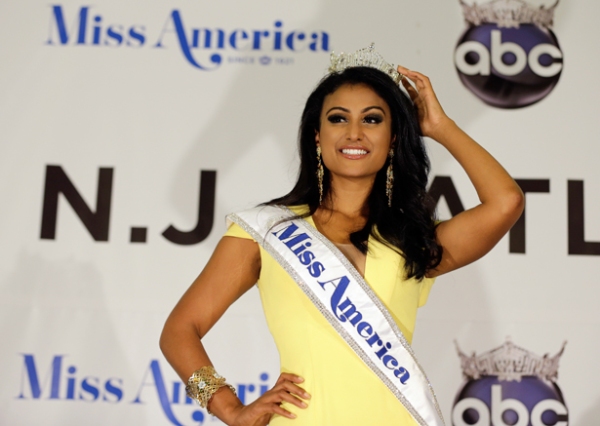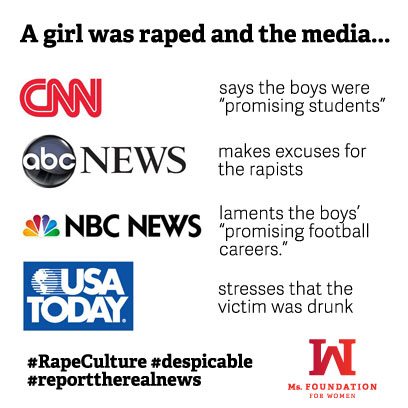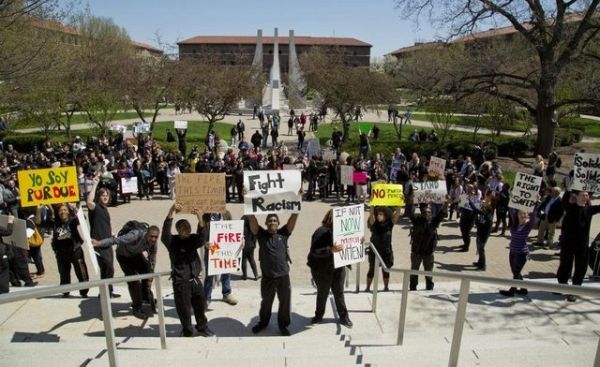Last year, Arizona’s public school system received a great deal of attention after Superintendent Huppenthal shut down the state’s acclaimed Mexican American Studies program (called Raza Studies), claiming that it fostered resentment toward white people and promoted ethnic solidarity and disrespect toward American (i.e., white western European) history, or “anti-Americanism,” and that it inculcated leftist ideas.

Students and teachers from the Raza Studies program protest to protect ethnic studies programs in Arizona’s public schools.
To put this whole issue in perspective, let’s first remember that parts of Arizona, New Mexico, and Texas used to be Mexico.
The following quote is pulled from the documentary Precious Knowledge (2012), about Arizona students’ and educators’ battle to keep the program:
- “The [Raza] program was a national model of educational success — 93 percent of its enrolled students graduating from high school and 85 percent going on to attend college, bucking a statewide trend that saw only 48 percent of Latino students graduating at all. The program taught Mexican and American history, as well as Central and South American literature and culture. But the political tide shifted in Arizona in the 2000s. The state passed extremely controversial immigration laws…”
So why would state officials shut down such a successful program? Huppenthal cited Arizona House Bill 2281 to make his arguments that what the teachers in the Raza Studies program were teaching was illegal. Read an HB 2281 excerpt below:
“A school district o charter school in this state shall not include in its program of instruction any courses or classes that include any of the following:
- Promote the overthrow of the United States Government.
- Promote resentment toward a race or class of people.
- Are designed primarily for pupils of a particular ethnic group.
- Advocate ethnic solidarity instead of the treatment of pupils as individuals.”
AND NOW?
As of March this year, an Arizona judge upheld certain provisions of a state law that bans ethnic studies in Tucson’s schools;however, the judge ruled that the section of the law prohibiting courses tailored to serve students of a particular ethnicity was unconstitutional, a small win. The teachers of the Raza Studies program – some of whom have been volunteering their time to continue teaching ethnic studies to interested students in the community – are continuing to fight the decision.
QUESTIONS
- What connections can you make between Kozol’s “Preparing Minds for Markets” and recent attacks on ethnic studies programs?
- How do race and ethnicity make students vulnerable in educational institutions?
- How do you see recent public debates about immigration reflected in Arizona’s reactionary education policies?
 Beginning on November 2nd, Purdue will be host to a week’s worth of events aimed at stopping human trafficking. Although we haven’t explicitly discussed this topic in class, Adrienne Rich does mention human trafficking (specifically sex trafficking) as one of the methods used by those in power to maintain the powers of men (see “Compulsory Heterosexuality…”). The events will include informational talks, a documentary screening (hosted by Marie Kellemen from the YWCA, who spoke with our class earlier this semester), and even guided prayer.
Beginning on November 2nd, Purdue will be host to a week’s worth of events aimed at stopping human trafficking. Although we haven’t explicitly discussed this topic in class, Adrienne Rich does mention human trafficking (specifically sex trafficking) as one of the methods used by those in power to maintain the powers of men (see “Compulsory Heterosexuality…”). The events will include informational talks, a documentary screening (hosted by Marie Kellemen from the YWCA, who spoke with our class earlier this semester), and even guided prayer.








